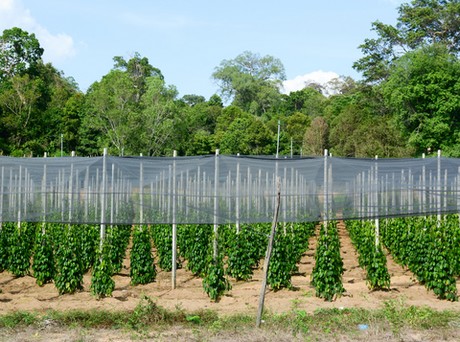2020 WILL BE THE YEAR VIETNAM'S PRODUCE ENTERS EUROPE EN MASSE
12 Thu, 2019
The recent signing of the EU-Vietnam Free Trade Agreement (EVFTA), which is expected to take effect from early 2020, has opened the door wider for Vietnamese farm produce to make inroads into the more than 500-million people strong market.
According to Chairman of the Vietnam Pepper Association Nguyen Nam Hai, Vietnam exports about 40,000 tonnes of pepper to the EU each year, meeting 53 percent of the market’s demand.
Along with pepper, other agricultural products from Vietnam are gaining foothold in EU countries such as fruits, vegetables and cashew nuts.
Nguyen Quoc Toan, Director of the Agro Processing and Market Development Authority (Agrotrade) under the Ministry of Agricultural and Rural Development, said the EU is one of the three biggest importers of Vietnamese farm produce.

In the first eight months of 2019, the EU market accounted for more than 12 percent of Vietnam’s agricultural exports, he noted.
Deputy head of the European-American Market Department under the Ministry of Industry and Trade Tran Ngoc Quan said the EU is committed to removing 94 percent of the total 547 tariff lines for vegetables and fruits after the EVFTA comes into effect.
Vuong Truong Giang, head of the plant protection department’s food safety and environment office from the Ministry of Agriculture and Rural Development, suggested Vietnamese firms seek solutions to controlling the quality of products from producing to processing and preserving stages, and building standardize material growing zones to meet requirements on origin.
Minister of Agriculture and Rural Development Nguyen Xuan Cuong said the ministry has approved a planning scheme for key fruit growing areas in the southern region through 2020.
Meanwhile, Minister of Industry and Trade Tran Tuan Anh said his ministry will work with trade counselors in EU countries to update trade barriers and help businesses attract investment in production and processing.
Businesses exporting farm produce to the EU said to penetrate the market, there is no need to place heavy premiums on export volume, instead focusing on the quality and transparency of the origin of products, designs and brands.
Source: Vietnam+
Website posting: https://www.freshplaza.com
Related Post
The true fishmeal carbon footprint
The established Life Cycle Analysis (LCA) methodology to assess the fishmeal carbon footprint only accounts for the vessel fuel and post-harvest processing energy while ignoring the carbon sequestration potential of fish.
View more
Freezing Tropical Fruits: Convenient and Effective Solution with Octofrost Machines
Tropical fruits are always a great choice for providing nutrition and fresh flavor to daily meals.
View more


